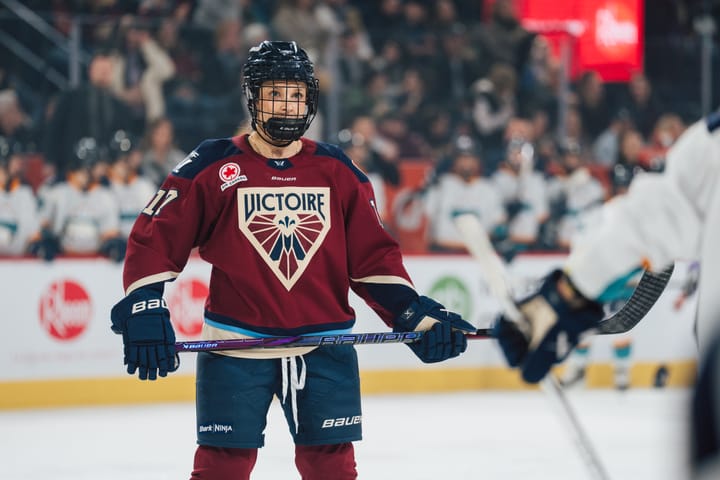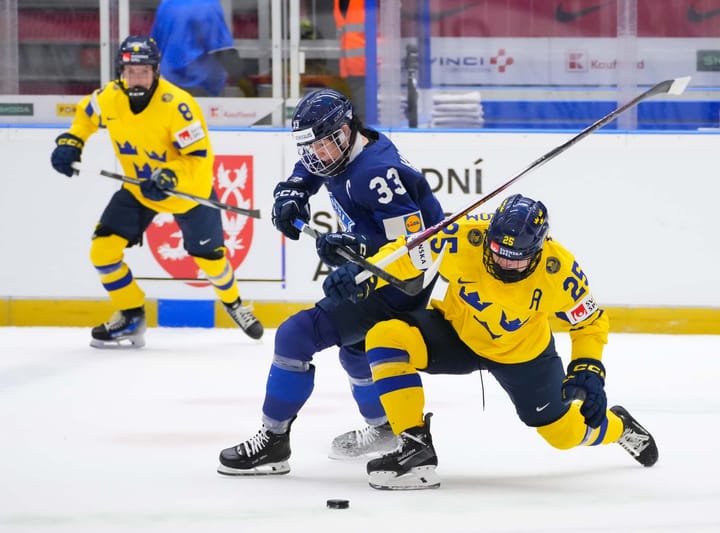How Team USA and PWHPA players are navigating their unknown schedule
What it’s like to train when you don’t know exactly what your training for is going to happen
The life of a professional athlete often revolves around living out of a suitcase and constant travel to keep up with practices and games. The COVID-19 pandemic has thrown a wrench into sports and more specifically, women’s hockey. The PWHPA Secret Dream Gap Tour that spotlighted the sport in New York and Chicago provided a great opportunity to showcase women’s hockey to a wider audience that might only tune in once every four years in the month of February.
The four Dream Gap Tour games that took place were some of the first competitive hockey action that players have had since the pandemic started. Being able to self-motivate yourself to find ice time and work on dry-land training has been a struggle for a lot of women’s hockey players.
Not having a set number of games to prepare for and USA Hockey camps on the calendar has been a challenge. A lot of players spent the fall and winter waking up at the crack of dawn to get down to the rink and skate, because they love hockey.
“I’d say it’s more mentally challenging than anything,” Goaltender Alex Cavallini explained to The Ice Garden. “We waited so long just to see when Worlds would be announced. We’re super excited that they have been announced and they’re pushed back a month. There was a long gap where we didn’t get together. We’ve got together as a USA group once in over a year and that was in October. That was a super exciting time for our national team and players in the player pool to get together and train.”
“It was hard after October because our January and December camps both got cancelled. I think it’s just having the mindset of knowing why you are training and what your purpose is. It definitely was hard getting things cancelled, but it definitely gave us a glimmer of hope when we were able to play these PWHPA games.”
Staying positive during a global pandemic is challenge for anyone. COVID-19 has put a much needed focus on mental and physical health. How are some of the best players in the sport dealing with the mental and physical challenges of a pandemic?
“If you don’t know when the next camp or games are, I think that would be the biggest challenge,” Abby Roque told reporters via zoom. “Trying to time out training and things like that, as everybody goes through phases of when you know the next event you’re working for. A lot of things are getting announced right now which makes it a lot easier to look at games and possibilities and finally Worlds as long as everything goes well.”
“I think for every athlete in the world there was a time when nobody was playing any sports and I think that was a really tough time for everyone. I think through that, everyone kept working, hoping there would be an end in sight. I think we’re finally seeing a time when we can get back playing and doing what we love.”
As much as hockey fans want to watch their favourite teams and players compete, players just want the opportunity to play hockey. Too often enough women’s sports seems to bare the brunt of competition cuts. Now that the Worlds are set to take place in Nova Scotia in May, and the PWHPA is heading to St. Louis next month, there is finally something for fans and players to circle on their calendar with excitement.
“Yeah it’s hard,” Kelly Pannek explained to The Ice Garden. “At the beginning of all of this, a year ago, it was the disappointment of the World Championships being cancelled, but after that it kind of gets into a normal offseason. The summer schedule is a whole lot different. The biggest challenge has been workouts.”
“I work out at the U of M (University of Minnesota) and they haven’t been allowing any outside athletes, nor did they allow any of their athletes all summer. It’s hard but then at the same time you have to keep things in perspective and making sure everyone is healthy and safe. Definitely we’re seeing the light at the end of the tunnel with things on the schedule to look forward to. I know all of us are really excited to get back on the ice for that March camp.”
It’s a very familiar scenario for fellow Minnesota native Dani Cameranesi as she tries to avoid hitting the morning snooze button.
“We actually have three practices a week with the PWHPA,” Cameranesi explained to The Ice Garden via telephone. “Our Minnesota region team, we have Tuesday, Wednesday, and Thursday. Our Tuesday’s and Thursday’s are a bit early in the morning at 6:30 AM, and then a Wednesday night practice. The Thursday mornings are pretty tough. We usually get on the ice one other time with some of us U.S.A girls. We’re working out five days a week, just to try and stay in shape, because we don’t have those games. We’re just doing the best we can to stay in shape for when we do have games.”
“It’s definitely tough,” Cameranesi added. “I’d say the thing we miss most, we love games, that’s where we have the most fun. It’s where you’re able to showcase those abilities. You can see the stuff that you’re working on in practice come to fruition. Just being able to be out there with your teammates, that parts definitely difficult. Just kind of knowing that you are doing the right things, hopefully for when you do have games, that parts been mentally challenging. Usually, we wouldn’t work out this often in season, but we don’t have games. It’s basically just trying to find the right combination and figure out what works for you, so when the time comes you are prepared.”
What exactly are PWHPA players doing when they aren’t practicing for the Dream Gap Tour stop or in camp with USA Hockey or Hockey Canada?
“When I’m not with the PWHPA or USA Hockey, I’m training on my own here in St. Louis,” Cavallini explained. “I skate with a goalie coach and my husband will come out and shoot. Some of the men’s teams players will come out and skate three or four times a week, depending on how much ice I can get. It’s pretty much goalie lessons.”
“I’m lucky there’s time where there is four or five players on the ice so I’m able to do some more realistic plays and game like situation stuff. Nothing replicates an actually game. A lot of the players are in the same situation. We’re all grinding away to make sure that we’re performing at the highest level possible.”
It’s certainly been a tough year for everyone including professional women’s hockey players. Finding consistency with a set routine is vital for preparing for a tournament like the 2022 Beijing Olympic games. As COVID-19 vaccinations continue to reach more and more people, there is hope and optimism that the sport will be able to get back to the free flowing hockey that everyone loves.





Comments ()